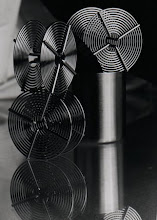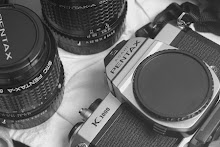by John O'Keefe-Odom
Detailed below are some of our policies for the content and presentation of our images. In summary, key points include:
- Respect for subject
- Strait recording
- Image comptrollers
- Rebroadcasts in accordance with copyright law
- Encourage healthy body image
Click here to jump to our standards for cosmetics.
Click here to jump to our standards for models.
Aesthetic Ethics and Photo Standards at AgXphoto.info
Respect for subject is our leading characteristic in standard compliance decisions.
Carry out a general purpose avoidance of any editing characteristic which would alter the overall message content of the photograph. Reportage of observed reality preferred.
No manipulation of photographs. Manipulation in editing is defined as post-recording separate treatment of a subset of the image, without exception. Changes to the entire surface area of the displayed image are acceptable. Examples of acceptable changes include: cropping, tone, color temperature correction, exposure and contrast.
Image Distribution and Control.
All rights reserved.
Image Comptroller required.
We discourage the redistribution of our images to or public display by corporate organizations who fail to appoint and maintain a designated responsible and accountable person who controls the display of the image. This person would be regarded by us as an Image Comptroller.
Image Comptrollers would be parties designated to approve or deny the printing or transmitting of an image.
Image Comptrollers have the authority to both transmit the image and to terminate the appearance of an image within 24 hours, in all applicable documents.
The point of contact and identity of an Image Comptroller would be a common predicate to the commercial sale or reprinting of our images.
We consider our works published from the moment they are displayed for lending or advertised for any sale.
Many of our works have been registered with the Library of Congress. We retain certificates to support future copyright enforcement needs.
We patrol for, and follow up on, the commercial display of our images to ensure that they comply with our licensing standards.
We recognize that the artist, as initial creator of the recording, is the unqualified granter of license and permission to other entities in order to print, reprint and mechanically transmit our images.
We reserve the right to revoke that license at any time in accordance with US Copyright Law as described through, but not limited to, the Library of Congress' website at copyright.gov.
Cosmetics.
In studio:
We have discontinued the use of most studio cosmetics.
No cosmetic application for editing of the presentation of the figure.
Soap, water and toothpaste are acceptable.
Limited applications of unscented deodorant (armpit wax) optional.
Basic personal hygiene to maintain health required.
Hair cutting or styling without the use of additives or dyes is acceptable.
No: additional colorings, dyes, waxes, varnishes, adhesives or substances are to be applied to the subject's skin, hair or nails.
Models may wear prosthetics as prescribed by a doctor. Prosthetics include dental and optical appliances (e.g. dentures, crowns, contact lenses and glasses).
Models are encouraged to remove all jewelry excepting wedding bands or wedding band sets.
In reportage:
Persons in public will be recorded as they normally appear.
No additional studio makeups or cosmetics will be applied for the purpose of our making the photograph, in accordance with the guidelines above.
Models.
Models should be over 18 years of age to establish a minimum dimension of legal and psychological responsibility in a commercially competitive environment.
Discourage the use of:
- plastic surgery (other than reconstructive or prosthetic replacement)
- elective surgery to the bones and teeth requiring more than 48 hours of recovery
- non-prosthetic inserts, implants, injections, grafts or similar permanent intrusions designed to change appearance more than bodily structure & function
- crash diets for weight gain or loss
- or any other practices abnormally aggressive to one's health.
Encourage the use of:
- reasonable caloric intake (e.g. 2,000 calorie days of balanced nutrition)
- reasonable physical fitness (cp. President's Council of Physical Fitness standards by age and gender or US Army APFT)
- and reasonable medical maintenance (doctor's care for wounds, injuries, ailments and diseases).
Height, weight and body fat: comparable to US Army passing scores ("GO") for height and weight against age and gender. Standards are outlined in US Army Regulation 600-9, "Army Weight Control Program".
Note that the minimum weight for a six foot tall (72 inch) person is 140 pounds. At 40+ years old, the maximum weight would be 191.
Models are encouraged to surpass minimum weight requirements for females IAW USA 600-9. Models are encouraged to maintain healthy, below maximum, weight requirements. We encourage common, good physical fitness (APFT "GO").
A healthy increment of weight loss or gain is defined as 5 pounds per calendar month.
Note that USA 600-9 contains body fat standards and measurements for determining if a person outside of the guideline weights (too heavy) are considered overweight.
Our current contemporary attention is to actively discourage unhealthy low-weight practices, particularly among young females aspiring to model for photos.
Animal models are expected to have a handler on site. The animal models will be treated with a similar set of presentation standards, comparable to those outlined for humans but adjusted for species. This includes good general purpose animal health, a discouragement of unnecessary surgeries, and simplified common grooming (barbering). The handler will ensure the humane treatment and controlled behavior of the animal model.
# # #







No comments:
Post a Comment